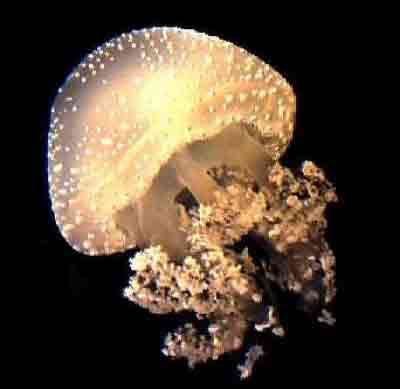Monster Jellyfish Invade Gulf of Mexico

Australian jellyfish that invaded the Gulf of Mexico seven years ago have made a "vigorous reappearance" this summer and threaten to devour native fish, scientists announced Friday.
And in the Gulf, with plenty to eat, they grow to monster size.
"In their native waters, they tend to be fist-sized," said Monty Graham of the Dauphin Island Sea Lab. "Here in the Gulf, they can be a big as dinner plates.”
The creatures can weigh up to 25 pounds.
The Australian spotted jellyfish, Phyllorhiza punctata, are not dangerous to humans. But scientists say the invasion could pose a threat to the fishing and shrimping industries. The jellies foul trawling nets and eat eggs and larvae of other fish.
The invasive jellyfish have been found in the Gulf since 2000 but in small numbers. This year, there are more of them, and their range has extended up to the Mid-Atlantic states.
“Reports from the Panhandle of Florida and North Carolina indicate they’re pretty concentrated elsewhere,” Graham said. “We just started getting reports of Phyllorhiza appearing on the east coast of Florida and as far up as North Carolina this year."
Sign up for the Live Science daily newsletter now
Get the world’s most fascinating discoveries delivered straight to your inbox.
Jellyfish can be carried around the globe when they attach to ships. Other studies have found that species of moon jellyfish are invading seas all over the planet. Another study finds jellyfish are opportunists, moving in and taking over regions of the sea that humans overfish.
Officials encourage jellyfish sightings be reported to the Sea Lab's web site.
- Gallery: Invasive Species
- Rich Gallery of Deep-Sea Life Discovered in Bermuda Triangle
- Images: Freaky Fish
Robert is an independent health and science journalist and writer based in Phoenix, Arizona. He is a former editor-in-chief of Live Science with over 20 years of experience as a reporter and editor. He has worked on websites such as Space.com and Tom's Guide, and is a contributor on Medium, covering how we age and how to optimize the mind and body through time. He has a journalism degree from Humboldt State University in California.











